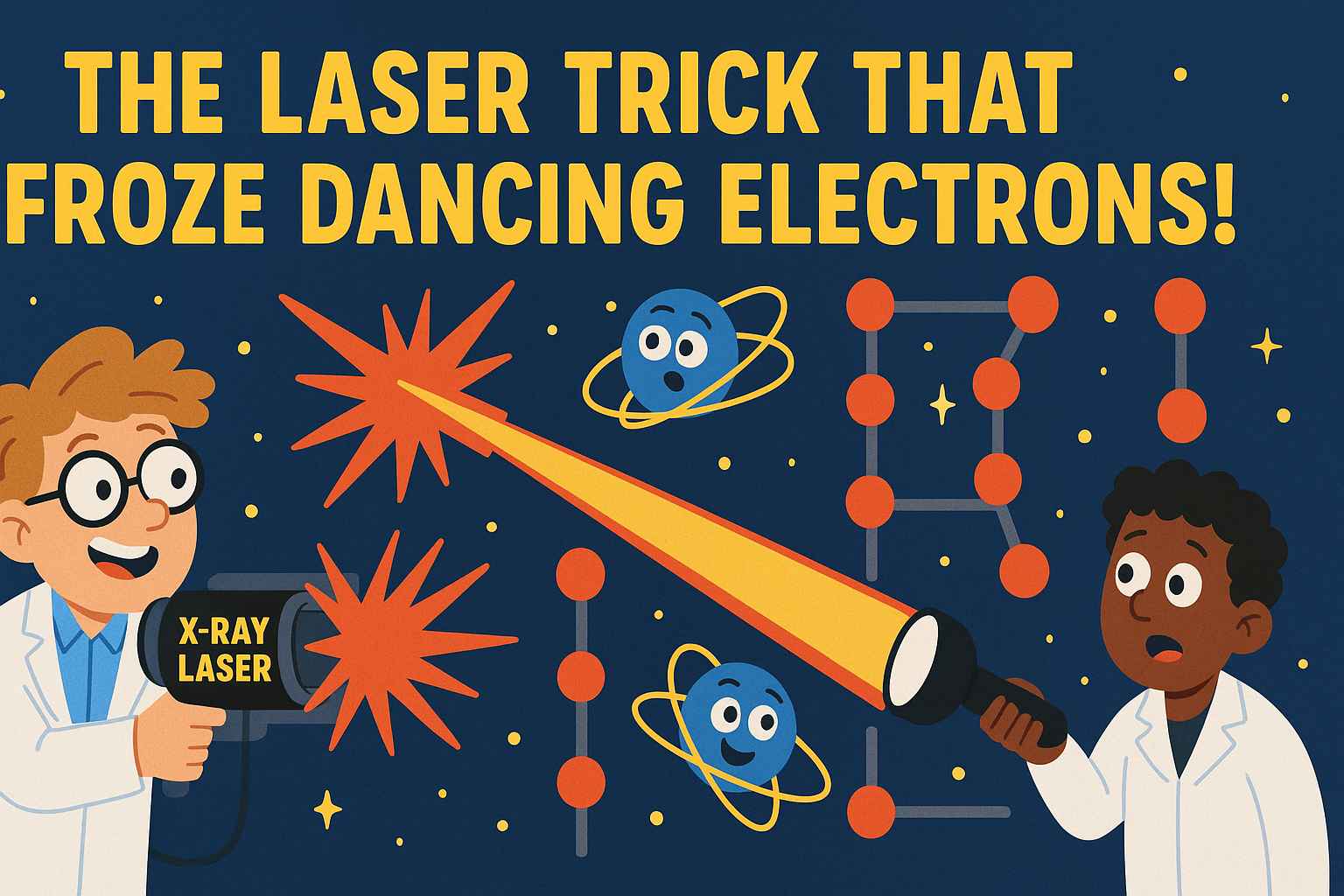
How Scientists Stopped a Quantum Dance with Light!
By Kids Science Magazine | June 2025
Imagine trying to take a picture of a lightning-fast dancer who disappears before you can even blink. That’s what it’s like for scientists trying to study quantum materials—super special substances where tiny particles like electrons behave in very mysterious ways. But now, a team of scientists from Harvard University and the Paul Scherrer Institute (PSI) in Switzerland has pulled off an amazing trick.
They used a super-fast laser and bright X-ray beams to freeze these zippy quantum movements long enough to peek at them! It’s like putting a superhero in slow motion—so we can see what they’re really doing.
🕵️♂️The Quantum Mystery: Now You See It, Now You Don’t!
Quantum materials can do awesome things like carry electricity without any loss or help create futuristic batteries. But there’s a catch: those cool powers only show up when scientists poke the material with a flash of light—and even then, the powers vanish again in just trillionths of a second!
That’s not enough time to use them in real life… until now.
💡The Light That Opened a Secret Tunnel
The team used a one-of-a-kind material called Sr₁₄Cu₂₄O₄₁ (yeah, it’s a mouthful, so let’s call it “Ladder Compound”) where copper and oxygen atoms line up like tiny ladders and chains.
Normally, the electrons in this material are stuck in place because of a special balance—kind of like a see-saw perfectly level. But here’s the genius part:
The scientists sent in a laser pulse that broke the balance and opened up a “quantum tunnel”—a secret passage for electrons to move through!
Once the tunnel opened, electrons jumped from the chains to the ladders. And when the laser turned off? The tunnel shut down—but the electrons stayed in their new places, frozen in a whole new state!
⚡Fast X-Ray Vision to the Rescue!
To watch all this quantum action, the scientists used an ultra-bright X-ray laser called SwissFEL, which flashes in just femtoseconds (that’s a million-billionth of a second!).
They used a special technique (with a very cool name) called tr-RIXS, which helps them spy on how electrons and atoms are behaving. It’s like having a microscope made for invisible quantum stuff.
Thanks to this X-ray trick, the scientists were able to actually see how electrons got “stuck” in their new state, like a photo of a moving ballerina frozen mid-leap!
🌟Why This is a Big Deal
This isn’t just a fun science magic show—this discovery could help build the next generation of technology, like:
- Quantum computers that are ultra-fast and powerful
- Photonic chips that use light to send signals
- Memory storage that never forgets because it’s stored in light-frozen quantum states!
And this was just their first test. The X-ray lab where this happened, called Furka, is already being upgraded for even cooler experiments!
🤔 DID YOU KNOW?
- The material used is called a “cuprate ladder” because of how copper atoms form ladder shapes!
- Femtosecond lasers are so fast they can flash over a billion times in the time it takes you to blink!
- A metastable state is like a paused video—it looks frozen, but it’s ready to change if the right “play” button is pushed.
🧠 Quiz Time!
1. What does the laser pulse do to the quantum material?
A) Breaks it into pieces
B) Makes it super cold
C) Breaks the balance and opens a tunnel for electrons
D) Turns it into gold
2. What tool did the scientists use to “see” the electrons move?
A) A magnifying glass
B) A space telescope
C) SwissFEL X-ray laser
D) A microscope
3. Why is this discovery exciting?
A) It looks pretty
B) It helps scientists learn how to control quantum materials for cool tech
C) It makes sound louder
D) It cooks food faster
Answers: 1—C, 2—C, 3—B
🧪 Important Info Recap
- Scientists used a laser to unlock hidden powers in a quantum material.
- They “froze” this new state using a trick with light and X-rays.
- The discovery helps us understand how to control strange quantum behaviors.
- It could lead to awesome tech like faster computers and better memory!
🔍 Final Thought:
In the world of quantum science, things are weird, wild—and now, a little less mysterious, thanks to laser light and X-ray super-eyes. Who knew shining a flashlight at the tiniest particles could unlock the future?






